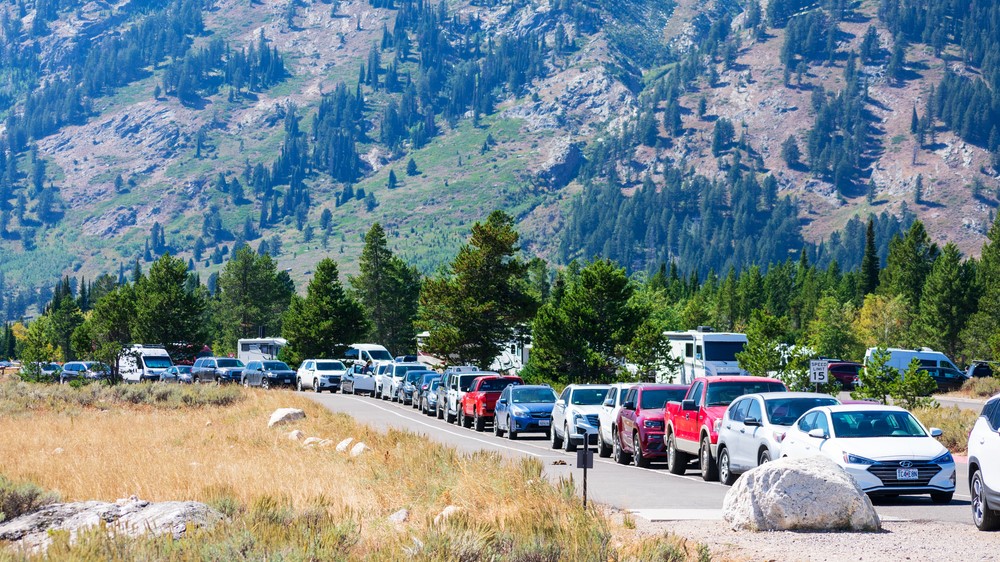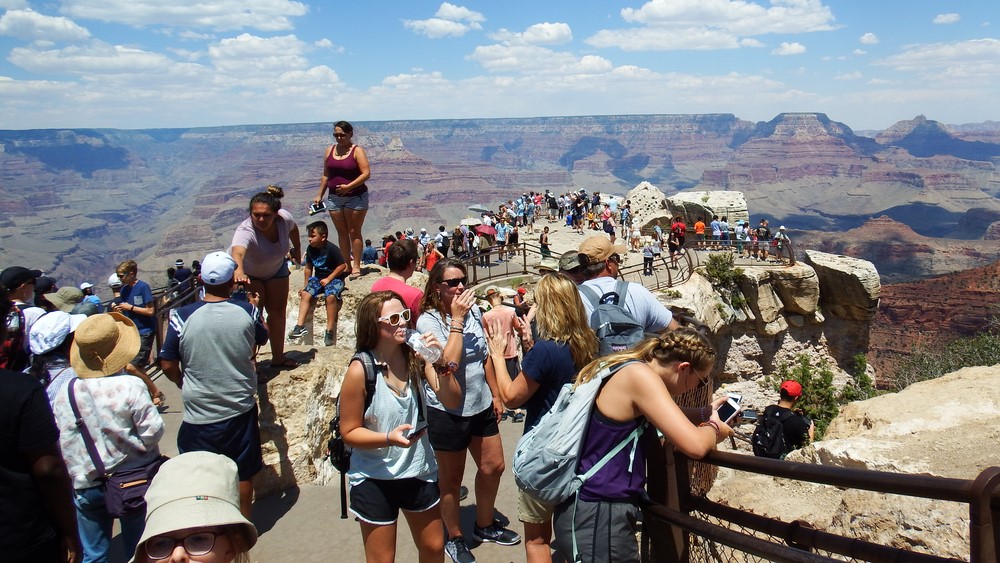Post-pandemic overcrowding of national parks causing bigger problems than just long lines
The problem has been escalating for years.

Across the United States, national parks are facing an unprecedented number of visitors as COVID-19 restrictions end and people who have been stuck at home for over a year take advantage of their newfound freedom.
This is leading to long lines and traffic jams as hikers and outdoor enthusiasts flock to these open spaces, with some parks even turning people away. In Utah, around 194,000 people visited Arches National Park in April, a 15% increase from the number of visitors during the same month in 2019, and at Canyonlands National Park, the increase has been even greater, at around 30%, according to The Wall Street Journal.
And in Tennessee, Great Smoky Mountains National Park has seen a flood of visitors so far this year, according to news site wymt; as of May 20, the National Park Service (NPS) had recorded more than 3.13 million visitors to the park, representing a 115% increase from the same time in 2020, when the pandemic kept people in lockdown mode.
Related: Top 10 most visited national parks
Most of this "overflow" across the nation is coming from visitors who have never been to a national park before, according to The New York Post. Now, experts fear that overcrowding will ruin not only people's experience but also the parks themselves.
"That is why it is such a difficult problem," Michael Childers, a historian and national park expert at Colorado State University, told Live Science. "We all want to experience these places, but we can't all go at once."

Overcrowding issues
There are two main problems with the overcrowding of national parks. For one, the visitor experience suffers.
Get the world’s most fascinating discoveries delivered straight to your inbox.
"The national parks were created so that visitors could experience the natural beauty and history of a place," Childers said. "This is difficult to do if you are queuing up to hike or trying to find a parking spot."
The second — and more serious — problem is that throngs of visitors also put a significant strain on the environment in and around national parks.
Related: The 10 least visited national parks
For instance, overcrowding has harmed the giant sequoia trees (Sequoiadendron giganteum) in California's Yosemite National Park.
"Yosemite overcrowding was damaging the rather shallow root systems of the giant sequoias," Childers said. "While the National Park Service did build a raised walkway to solve some of this problem, too many visitors driving to, parking and scrambling around the trees remains a problem."
With more people come more litter, more noise, more pollution from cars and an increased chance of human-animal encounters, all of which can have a negative impact on the environment, Childers said.
Historic problem
The number of people visiting national parks is increasing compared with pre-pandemic levels, but overcrowding has been an issue for national parks before the first case of COVID-19.
In 2019, more than 327 million people visited national parks in the U.S., which is more than double the 159 million people who visited the parks in 1969. Going back another 50 years to 1919, only 781,000 people visited national parks, representing just 0.2% of today's numbers, according to the NPS.

"This is not a new issue," Childers said. "But the pandemic does appear to have accelerated a historic surge in visitation throughout the system."
In the past, two other significant increases in visitor numbers occurred.
"The first was in the 1920s, when the automobile made travel much more affordable to a larger number of people," Childers said. "The second was in the 1950s, when national affluence caused a huge spike in tourism."
On both occasions, the federal government increased spending for national parks to build new buildings, roads, bathrooms and lodges to help accommodate the demand, Childers said. "This solved the immediate problem but also served to make the parks even more accessible, which is what we are struggling with today."
Potential solutions
So what can be done to help national parks deal with the current overcrowding and limit its environmental impacts?
"There is no single solution to the problem," Childers said, "but rather a combination of things."
One option involves more government spending. The funds could be used to continue improving the infrastructure necessary to accommodate more people, such as ticket machines to reduce queues, bigger parking lots to alleviate traffic and more amenities, such as bathrooms, water fountains, trash cans and picnic areas. But an even more important step would be to hire more people to look after the parks.
"The national parks have been chronically understaffed for decades," Childers said. "We must invest in more rangers, scientists and administrative staff if we are going to properly steward these places."
Another option is to require people to book their trips to the biggest national parks. This would limit the number of people who could visit the parks and provide opportunities to allow access to a wider diversity of people, such as first-time visitors, Childers said. However, this would likely be an unpopular solution for frequent visitors and local businesses.
The final option is for visitors to take on the responsibility themselves. "We, the visitors, have to change our expectations that we can visit and experience the more popular parks whenever and however we want," Childers said. "This shift in expectations is likely the most difficult, but the most impactful" thing we can do.
However, despite the need for reform, Childers still believes that national parks are vital and wants as many people to be able to experience them as possible, with some limits.
"The idea of the national parks is to provide respite and contemplation of wondrous places," Childers said. "The more people who can enjoy this, the better, but we need to find a way to do so so that future generations can also enjoy them."
Originally published on Live Science.

Harry is a U.K.-based senior staff writer at Live Science. He studied marine biology at the University of Exeter before training to become a journalist. He covers a wide range of topics including space exploration, planetary science, space weather, climate change, animal behavior and paleontology. His recent work on the solar maximum won "best space submission" at the 2024 Aerospace Media Awards and was shortlisted in the "top scoop" category at the NCTJ Awards for Excellence in 2023. He also writes Live Science's weekly Earth from space series.


